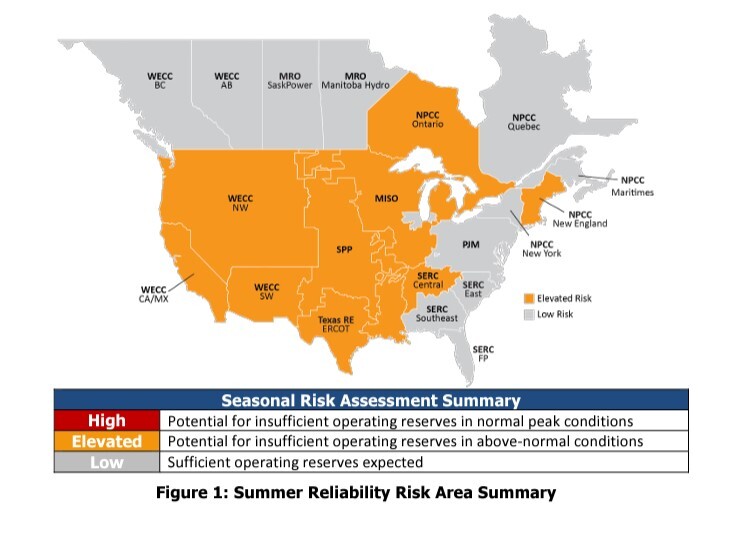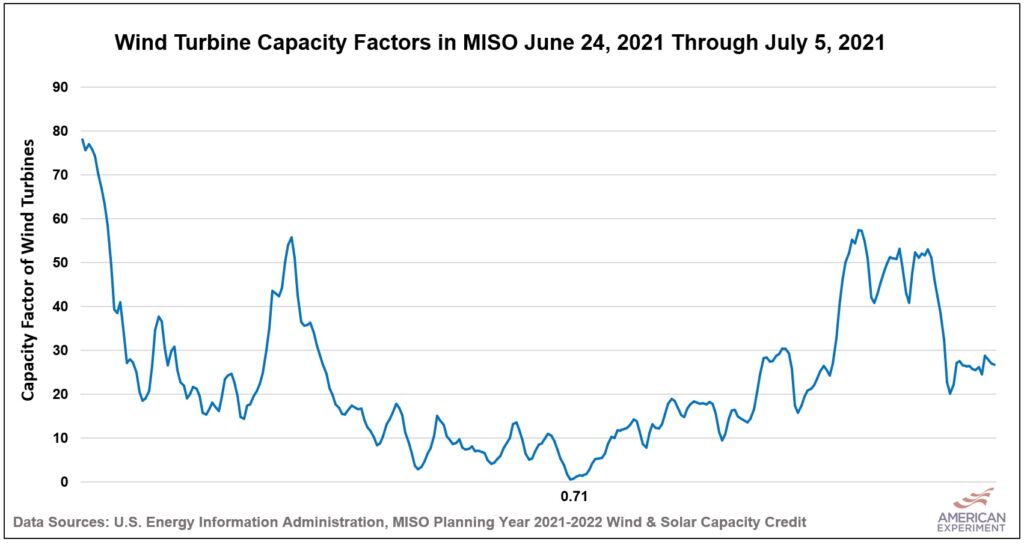Most of the U.S. faces elevated risks of blackouts during heatwaves this summer
On Wednesday, May 17, the North American Electric Reliability Corporation (NERC) issued its 2023 Summer Reliability Assessment. Summarizing the report, Utility Dive noted that most of the United States will face an elevated risk of blackouts should summer weather turn extreme.
Demand for cooling and the performance of wind and solar resources will be key factors in the grid’s performance. The situation has been exacerbated by demand growth and the retirement of coal and nuclear power plants.
All of the areas of the country appear to have enough reliable power plants online to meet normal summer peak electricity demand according to the NERC report, but most of the country will “face risks of electricity supply shortfalls during periods of more extreme summer conditions.” The areas at elevated risk are shown in orange on the map below.

NERC officials did not mince words when describing the reliability risks the nation faces this summer. “We are facing an absolute step-change,” NERC’s Director of Reliability Assessment and Performance Analysis John Moura said in a call with reporters. Over the past five years, NERC has seen a “steady deterioration in the risk profile of the grid.”
“The system is close to its edge … managing the pace of retirements is critical,” he said.
A common thread of the Utility Dive piece was how the performance of unreliable wind and solar resources would impact grid reliability.
In the Midcontinent ISO territory, “wind generator performance during periods of high demand is a key factor in determining whether there is sufficient electricity supply on the system to maintain reliability,” NERC said.
In the Southwest Power Pool, if wind output falls below normal, the grid operator “can face energy challenges in meeting extreme peak demand or managing periods of thermal or hydro generator outages.”
In Texas, “dispatchable generation may not be sufficient to meet reserves during an extreme heat wave that is accompanied by low winds.”
In the Western Interconnection, NERC said wide-area heat events can expose some assessment areas to a risk of energy supply shortfalls “as each area relies on regional transfers to meet demand at peak and the late afternoon to evening hours when energy output from the area’s vast solar PV resources are diminished.”
If you are depending on the wind to blow in the summertime, you are in big trouble.
Data from the U.S. Energy Information Administration (EIA) show wind generation can virtually reach zero during hot summer days. To depend on wind to meet surging electricity demand is to gamble with grid reliability. Maybe it will work, maybe it won’t.

Policymakers in America need to stop allowing reliable coal, natural gas, and nuclear plants to close down before there are reliable, dispatchable power plants to replace them.
This should be common sense, but state lawmakers and President Biden’s Environmental Protection Agency continue to pass laws and regulations that make it more difficult to keep reliable coal and natural gas plants in operation. The end result will be widespread rolling blackouts that harm American families and businesses.
The biggest tragedy in this situation is that the blackouts are entirely foreseeable and preventable, but the Biden administration and liberal state lawmakers are intent on pushing policies that make them inevitable. Elections have consequences.